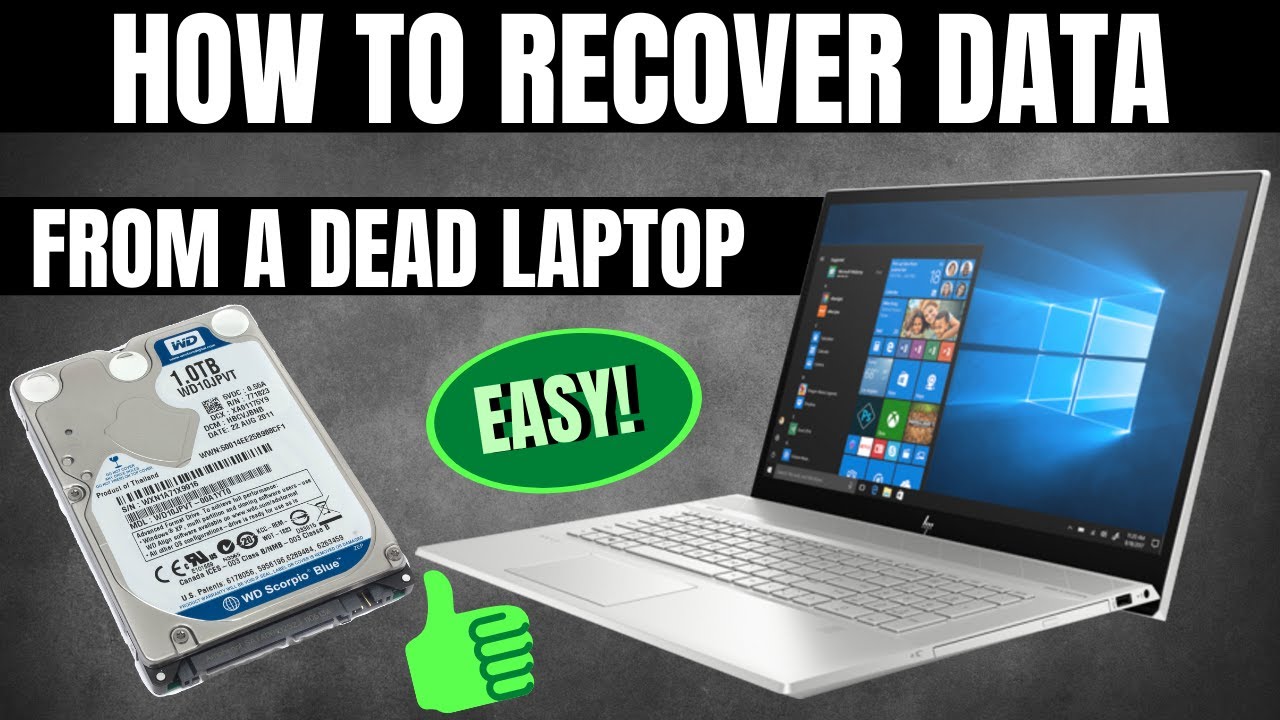Losing data from a broken laptop can be a stressful situation, but the good news is that many times, it’s possible to recover that data. Whether your laptop is damaged due to a cracked screen, a faulty hard drive, or a motherboard failure, here’s a step-by-step guide to help you recover your important files.
1. Assess the Damage
The first step is to understand the extent of the damage. Determine whether it’s a hardware issue or a software problem:
- Hardware Issues: This includes broken screens, hard drives, or damaged power supply.
- Software Issues: These could be operating system crashes or corrupted files.
2. Try Booting in Safe Mode
If your laptop is still powering on but not booting up, try booting it in safe mode. This can help you access your files and recover data. Here’s how to do it:
- Turn off your laptop completely.
- Power it back on, and as soon as you see the manufacturer’s logo, repeatedly press the F8 or Shift+F8 key to enter safe mode.
- Once in safe mode, copy your files to an external hard drive or cloud storage.
3. Use a Bootable USB Drive
If your laptop is not turning on, you can use a bootable USB drive to try to access your laptop’s hard drive. Here’s what you’ll need to do:
- Prepare a USB drive with a bootable operating system (you can use tools like Windows Media Creation Tool for Windows or a live Linux distribution).
- Insert the bootable USB drive into your laptop.
- Restart the laptop and enter the BIOS settings (usually by pressing F2 or Del during boot).
- Set the USB drive as the first boot device.
- Boot the system and try to recover your files by connecting the laptop’s internal hard drive to an external storage device.
4. Remove the Hard Drive and Connect to Another Computer
If your laptop is severely damaged or will not power on at all, you may need to remove the hard drive. You can connect it to another working computer to recover the files:
- Use a hard drive enclosure or SATA-to-USB adapter to connect the hard drive to another computer.
- Once connected, the external drive should appear on the second computer, and you can copy over any important files.
5. Use Data Recovery Software
If you were able to remove the hard drive, but still can’t access your files, you can use data recovery software. Some reliable options include:
- Recuva: A free program that can recover lost files from damaged or formatted drives.
- EaseUS Data Recovery Wizard: A popular tool for recovering deleted or lost files.
- Disk Drill: Another option for recovering lost data from a variety of storage devices. These tools can scan your drive and retrieve data that may have been corrupted or deleted.
6. Consult a Professional Data Recovery Service
If none of the above methods work, or if the hard drive has suffered physical damage, your best bet is to consult a professional data recovery service. They specialize in recovering data from severely damaged drives and can often retrieve data that would be otherwise inaccessible.
7. Back Up Data Regularly
Once your data is recovered, it’s essential to back up your files regularly to prevent future data loss. Consider using cloud storage services like Google Drive, OneDrive, or Dropbox, or invest in an external hard drive for local backups.
Conclusion
Recovering data from a broken laptop can be challenging, but it’s possible with the right tools and methods. By assessing the damage, trying basic troubleshooting steps, using data recovery software, and seeking professional help when needed, you can maximize your chances of retrieving important files. Don’t forget to back up your data regularly to avoid this situation in the future!
For more detailed tips and tools, visit Psero.com for further insights on laptop troubleshooting and data recovery.

